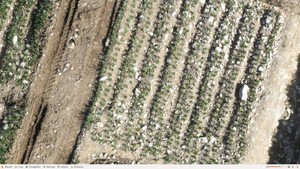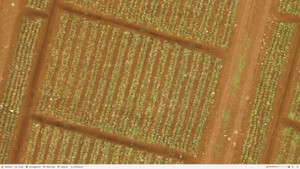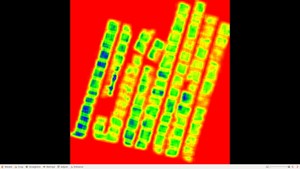How Predictive Analytics Adds Business Value
Every purchase decision, ignored email, accepted offer, abandoned cart, product review, or act of fraud is an integral part of most companies’ experience that can be used to improve future business decisions. But how can you generate actionable insights from terabytes of enterprise data? Predictive analytics is one of possible answers to this question.
In this article, we’ve used our data analytics expertise to explain the mechanics of predictive analytics, its advantages, and main use cases.
What is predictive analytics?
Predictive analytics is the way to forecast future outcomes by using historical data. The concept is nothing new. It’s been around for many years, since 1689 when Edward Lloyd’s Coffee House (now known as Lloyd’s of London) started to estimate risks of sea voyages based on data sets of past trips.
However, due to the growing volumes of data and improvements in computing capabilities, predictive analytics has become more advanced, accurate, and reliable. Unlike previous forecasting tools, a lot of modern predictive analytics solutions use deep learning algorithms that can work with unstructured data (text, audio, and video), allowing you to make use of information obtained from interviews, customer reviews, social media, and so on. In general, predictive analytics is today commonplace, with a projected market growth of 24.5% annually.
Predictive analytics models and their limitations
To anticipate future events, today’s data analytics solutions use various types of predictive models. They include:
- Forecast models. These aim to predict a numerical value based on historical input. For example, calculating how long it’ll take to prepare a double cheeseburger at Burger King and deliver it to a customer who lives in Manhattan on Wednesday afternoon is the task of the forecast model.
- Classification models. These categorize information based on what can be learned from historical data. These models are used to answer general questions, such as whether this employee is likely to quit (read: whether this employee belongs to the category of employees who are planning to quit), whether this transaction is fraudulent, whether this customer is ready to make a purchase, and so on.
- Outliers models. These models focus on finding anomalies in a data entry. For example, a sudden traffic spike on a website can be indicative of a DDoS cyberattack, while a purchase in a store in Berlin followed by a money withdrawal in Munich an hour later with the same card can be the result of credit card fraud, etc.
- Time series models. These look at data over time to predict what will happen in the next period based on patterns in the previous periods. Possible use cases for this model type can be calculating a company’s revenue for the next year, the number of new customers over the next 90 days, etc.
- Clustering models. These models sort data into groups based on common attributes. A perfect example is grouping customers into segments according to their behavioral patterns.
Trained with the help of machine learning or, in more advanced scenarios, deep learning algorithms, these predictive analytics models can improve themselves over time and can work miracles with your data. Still, they have some limitations, including:
- a shortage of data
- errors in data labeling
- underrepresentation of critical data sets
If some of these limitations apply, decisions made by an algorithm may lack reasoning, or the results you’ll get won’t be as reliable as you’ve expected. So, when working with predictive analytics models, make sure that your data science team knows how to address these issues.
Now, let’s find out why predictive analytics is beneficial to your business and where you can apply it.
The advantages of predictive analytics for business
Today, predictive analytics is an established business practice. For example, based on the MHI Annual Industry Report, 31% of supply chain professionals are already using predictive analytics in their operations, while 48% are planning to adopt the technology in the next five years.
So, what makes predictive analytics so attractive to businesses? Let’s take a look at the main benefits of the technology:
- Vision. Predictive analytics provides vision into what remains invisible to others. For example, you can see what your customer wants and what they are about to do next, when your equipment fails, when exactly you need to stock up, and so on. For example, the fruit crop prediction and biomass calculation solution developed by our team (Figure below) analyzes drone images to predict crop yield ahead of harvesting time.
- Speed. Instead of going through the rows of Excel spreadsheets to find valuable insights for better decision-making, you can trust these tasks to a machine that can crunch large amounts of data in real time. For example, it takes just milliseconds for the predictive tool of American Express to decide whether a transaction is fraudulent or not.
- Precision. Since predictive analytics models can digest vast amounts of data, they can be highly accurate. A case in point: a machine learning model we built for our client predicts the location of oil fields with 70% accuracy.
All in all, predictive analytics allows you to make precise predictions based on large amounts of data, fast.
Key predictive analytics use cases across industries
Data is a valuable asset that can bring value to any business aspect in any niche when used wisely. Below, we’ve rounded up the most common use cases of predictive analytics in business.
Customer behavior prediction
Any business revolves around customers. So, no wonder that consumer data is considered to be the most valuable of all data harvested by businesses. Companies that use predictive analytics in their processes can feed their models with this data to predict the behavior of their customers.
Knowing what a customer will do or will want to do in the future based on what they did in the past can come in handy in customer churn reduction, upselling, cross-selling, merchandising, cart abandonment prevention, dynamic pricing, customer lifetime value calculation, and beyond. For example:
- Harley Davidson uses predictive analytics in marketing campaigns to target potential leads and close sales. Once their AI solution identifies a customer ready to make a purchase, their sales representative contacts this person to help them choose a motorcycle. This strategy has brought the company a 2.9% increase in leads.
- Netflix collects large amounts of user data—including demographics, watch history, the influence of rating, and beyond—and uses this information for their recommendation engine. In fact, 80% of watched Netflix content is based on these recommendations.
- First Tennessee Bank used predictive analytics to detect clients that are most likely to respond to letters. As a result, they reduced their direct marketing expenses by 20% while increasing the response rate by 3.1%.
Besides, predictive analytics solutions can be trained to make predictions about one particular customer, a segment of customers, or even the entire market.
Product and service quality improvement
Even the most efficient customer attraction and retention strategy won’t work out if your products and/or services are of poor quality. Predictive analytics can be instrumental here, too. For instance, you can analyze your historical data to identify factors leading to subpar quality and even product failures. As a result, you can boost the level of customer satisfaction and reduce warranty costs.
A case in point is DoorDash. As early as 2016, this food delivery company started to use historical data to predict how long a customer would wait for their food. It takes into account a vast array of variables, including:
- How long did it historically take for this very restaurant to prepare a hamburger, steak, or whatever is on order?
- What day is it? Delivering on Monday morning is different from delivering on a Saturday evening.
- How long will it take for a Dasher (delivery person) to get to the food outlet? How will traffic affect this?
Answering these and many other questions allows DoorDash to increase couriers’ efficiency (they know exactly when to pick up the order without waiting around for it to be prepared) while making sure that a customer’s order arrives fresh and on time.
Predictive maintenance
As a big manufacturer, an unexpected equipment failure might cost you a whopping $22,000 per minute—depending on how much this machinery is critical to your processes.
Given that, timely equipment breakdown prevention can save your business, and predictive analytics can help you in this. Using data aggregated by sensors and feeding it into your analysis program, you can anticipate:
- when a particular machine or its component will need replacement
- what will cause a failure, and what type of activity will resolve the problem (if it’s possible to resolve)
- which machinery is at the highest risk of failure during high demand
- which equipment presents the highest short-term risk
And so on. By the way, predictive maintenance can be beneficial not only to production equipment but also to products that are sold to end-users. For example, Volvo leverages big data to predict each part’s breakdown rate and recommends maintenance plans to its customers before this part breaks and leads to a more serious problem.
HR operations
Employees are the driving force behind any business, so it’s critical for any organization to be able to attract and retain talent. Predictive analytics can make this process easier by aiding companies in various aspects of HR management, such as learning when staffing up or down is needed, which employees are most likely to quit in the near future, where to find the most suitable candidates, and so on.
For instance, Credit Suisse used predictive analytics to identify employees most likely to switch their job and the reasons behind their intention to quit. Thanks to this data and an efficient retention strategy to target the best-performing employees, the company managed to save an estimated $70 million on recruitment and onboarding.
Another example is E.ON, a German energy company that leveraged predictive analytics to address the problem of absenteeism. After having tested 21 hypotheses and having validated 11, they found out that the main reason behind the persisting non-presence of their employees was the lack of a long holiday once a year. As a result, the company changed its holiday approval policies and thus tackled the issue.
Fraud prevention
Credit card fraud can ruin a client’s banking experience and kill your reputation as a trustworthy financial institution. Given that, finance industry players are constantly honing their fraud prevention strategies, which has resulted in the broad adoption of predictive analytics in this industry. As a case in point, American Express now employs deep learning models to identify and flag abnormalities in credit card transactions in real-time.
Predictive technologies compare each transaction against thousands of others (or against the typical transaction patterns of a particular client). If the system detects an anomaly, it flags it for further investigation. For example, $1,500 spent at a technical store is a norm, but the same amount spent at a grocery store is suspicious and can result in the account being blocked.
By predicting and eliminating potential cyberattacks before they occur, companies boost loyalty in their existing clients while attracting new ones. This applies to any industry that deals with sensitive data, not just finance.
Conclusion
With advancements in computing technologies and ever-increasing volumes of data, predictive analytics solutions have become a crystal ball for modern businesses. Applicable across a variety of industries, these solutions can predict anything you train them to, from how many people will visit your diner next October with the COVID-19 situation taken into consideration to whether a given patient is likely to develop diabetes. And these are only scratching the surface of what predictive analytics can do.
If you want to learn more about what else predictive analytics is capable of and how it can help your business, don’t hesitate to check out our success stories dedicated to data analytics solutions or contact us to talk about your project.








